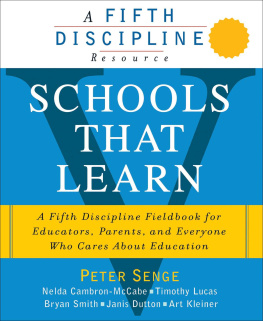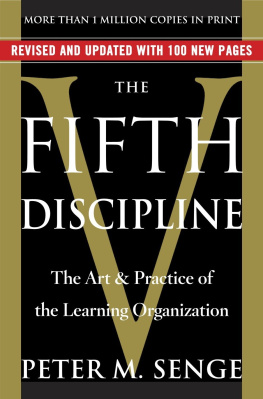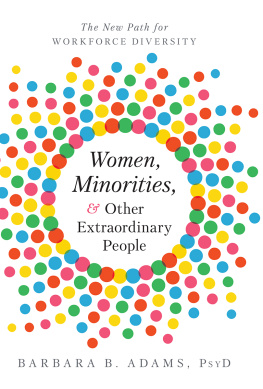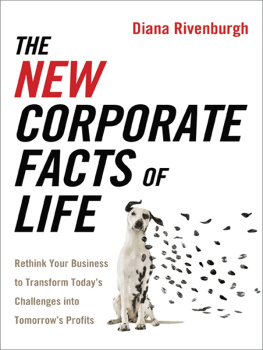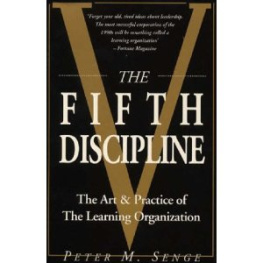Peter M. Senge - The Dance of Change: The challenges to sustaining momentum in a learning organization
Here you can read online Peter M. Senge - The Dance of Change: The challenges to sustaining momentum in a learning organization full text of the book (entire story) in english for free. Download pdf and epub, get meaning, cover and reviews about this ebook. year: 2014, publisher: The Crown Publishing Group, genre: Business. Description of the work, (preface) as well as reviews are available. Best literature library LitArk.com created for fans of good reading and offers a wide selection of genres:
Romance novel
Science fiction
Adventure
Detective
Science
History
Home and family
Prose
Art
Politics
Computer
Non-fiction
Religion
Business
Children
Humor
Choose a favorite category and find really read worthwhile books. Enjoy immersion in the world of imagination, feel the emotions of the characters or learn something new for yourself, make an fascinating discovery.

- Book:The Dance of Change: The challenges to sustaining momentum in a learning organization
- Author:
- Publisher:The Crown Publishing Group
- Genre:
- Year:2014
- Rating:3 / 5
- Favourites:Add to favourites
- Your mark:
The Dance of Change: The challenges to sustaining momentum in a learning organization: summary, description and annotation
We offer to read an annotation, description, summary or preface (depends on what the author of the book "The Dance of Change: The challenges to sustaining momentum in a learning organization" wrote himself). If you haven't found the necessary information about the book — write in the comments, we will try to find it.
Publisher: Crown Business; 1 edition
Publication Date: 14 May 2014
ISBN: 978-0-8041-5317-1 (eBook)
ISBN: 0-385-493223
Request #1515934731.68175
Since Peter Senge published his groundbreaking book The Fifth Discipline, he and his associates have frequently been asked by the business community: -How do we go beyond the first steps of corporate change? How do we sustain momentum?- They know that companies and organizations cannot thrive today without learning to adapt their attitudes and practices. But companies that establish change initiatives discover, after initial success, that even the most promising efforts to transform or revitalize organizations--despite interest, resources, and compelling business results--can fail to sustain themselves over time. Thats because organizations have complex, well-developed immune systems, aimed at preserving the status quo.
Now, drawing upon new theories about leadership and the long-term success of change initiatives, and based upon twenty-five years of experience building learning organizations, the authors of The Fifth Discipline Fieldbook show how to accelerate success and avoid the obstacles that can stall momentum. The Dance of Change, written for managers and executives at every level of an organization, reveals how business leaders can work together to anticipate the challenges that profound change will ultimately force the organization to face. Then, in a down-to-earth and compellingly clear format, readers will learn how to build the personal and organizational capabilities needed to meet those challenges.
These challenges are not imposed from the outside; they are the product of assumptions and practices that people take for granted--an inherent, natural part of the processes of change. And they can stop innovation cold, unless managers at all levels learn to anticipate them and recognize the hidden rewards in each challenge, and the potential to spur further growth. Within the frequently encountered challenge of -Not Enough Time, - for example--the lack of control over time available for innovation and learning initiatives--lies a valuable opportunity to reframe the way people organize their workplaces.
This book identifies universal challenges that organizations ultimately find themselves confronting, including the challenge of -Fear and Anxiety-; the need to diffuse learning across organizational boundaries; the ways in which assumptions built in to corporate measurement systems can handcuff learning initiatives; and the almost unavoidable misunderstandings between -true believers- and nonbelievers in a company.
Filled with individual and team exercises, in-depth accounts of sustaining learning initiatives by managers and leaders in the field, and well-tested practical advice, The Dance of Change provides an insiders perspective on implementing learning and change initiatives at such corporations as British Petroleum, Chrysler, Dupont, Ford, General Electric, Harley-Davidson, Hewlett-Packard, Mitsubishi Electric, Royal DutchShell, Shell Oil Company, Toyota, the United States Army, and Xerox. It offers crucial advice for line-level managers, executive leaders, internal networkers, educators, and others who are struggling to put change initiatives into practice.
Peter M. Senge: author's other books
Who wrote The Dance of Change: The challenges to sustaining momentum in a learning organization? Find out the surname, the name of the author of the book and a list of all author's works by series.

